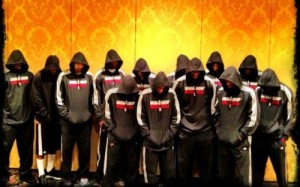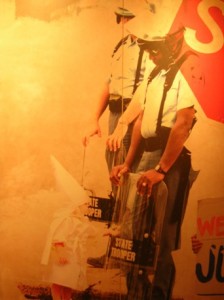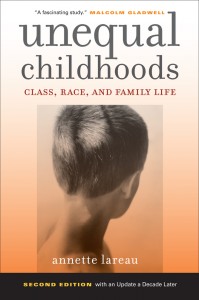This is an assignment my mentor and sociology professor from Luther College, Char Kunkel, uses in her class. Her description of the activity is below. Following that I have assembled a little bit of feedback from her students about the activity. I look forward to using it in my classes in the future!
GENDER NORM VIOLATION PROJECT
Norms are rules or standards of behavior shared by most members of a society or subgroup. They are statements about how you ought to, or should, behave. When appropriate behavior is defined differently for women and men, the expectations specific to each are called gender norms. One way to find out what the norms are in any given situation is to violate them–i.e., break the rules.
The purpose of this assignment is to determine the boundaries of some contemporary gender norms and to discover and challenge your own boundaries around gender. A secondary purpose is to give you the subjective experience of violating a self-defined gender norm – to give you “hands-on” experience.
Choose a natural (i.e., non-laboratory) setting in which to violate a gender norm. Think through clearly what norm you’re going to violate–make sure it’s a gender norm. Work with a confederate (either someone in class or a friend) and have her/him record the reactions to your norm violation as well as your behavior during the violation. You may also convince your confederate to do the gender violation and you be the observer/recorder. Sometimes the reactions will be minimal; other times it will be strong; remember, no reaction is a reaction!!! Be sure to record all reactions while they are happening. In addition, you must provide some physical evidence!! In the past, students have used cameras, video and tape recorders, flyers, receipts, etc. to capture reactions and document the project.
Your report should be about 7-10 pages, typewritten, and should include the following:
1. State specifically the gender norm you intend to violate. Explain why or how it is a gender norm, and provide cultural context.
2. State in clear details exactly what you did. Report any variations in your procedure. For example, you may try your experiment in one setting, then in another. You may compare different variations of the same norm violation, or change the degrees of violation. Give all the details of the violation process.
3. Describe your experience subjectively in two different ways: (1) your feelings as you prepared and engaged in the norm-violating behavior; (2) your feelings about how other people reacted to you.
4. Report in great detail the general and specific reactions of others to your behavior. Provide the observations of your confederate. If you get no reaction at all, or a mild reaction, report that. Report on the effects of any variations in your procedure, and what you think the significance of any (or no) reaction is.
5. What did you learn from this assignment? About yourself? About your culture? How does a theory of gendered embodiment help you understand your experience?
**Don’t do anything illegal. Stop whenever you are too uncomfortable with the situation. If you explain your behavior to anyone–report it. Be creative!
Students react very positively to this assignment and find it to be incredibly eye opening. Here is feedback from a couple of people who have done this activity:
The impact Char’s gender norm violation activity had on me had more to do with providing insight for how people who are gender variant are treated than on how I understand my own gender identity. – which I suppose was the point at the end of the day. I became hyper aware of how I was not performing a masculine gender well enough, in comparison to those around me. However, I also experienced first hand what it was like to have my gender policed when I was using a public bathroom.
What was more extraordinary for me was that the only thing I did differently was try to hide the fact I had long hair. I wear pants, and I wear loose fitting shirts, and I try to dress in a way that does not emphasize the fact that I have breasts on a regular basis. So, I present myself as being more masculine by the way I dress, in general.
However, I have never been told that I was using the wrong bathroom before. This was very shocking and very confusing for me. I felt that the rest of the people I interacted with knew I was a woman, and here, in the women’s restroom, I was told that I needed to use the men’s room. Who knew the length of my hair would be something that could cause so much drama for a person who had a full bladder?
So, in short, this experiment gave me brief insight and sparked interest in learning more about how gender variant people experience the world around us…not to mention working to be the best cis-gendered queer ally I can to all my gender queer friends. – Meghan Karels ’04
—
This activity taught me a great deal about gender norms and values in our society. I found it invaluable and far superior to simply reading about social expectation. Learning this way enabled me to better empathize with those whose sex and gender do not relate as society expects. I also feel better empowered to challenge people who ignorantly continue the perpetuation of gender normativity. – Anonymous










